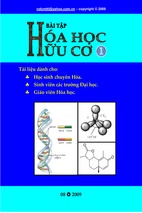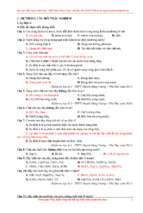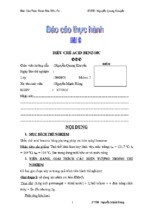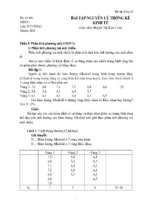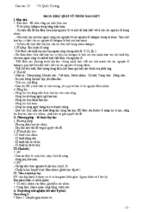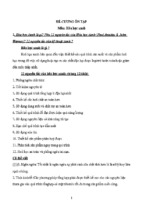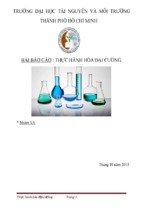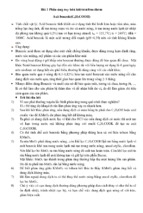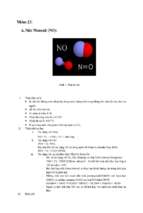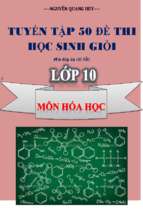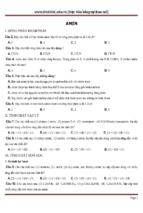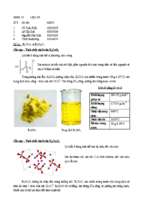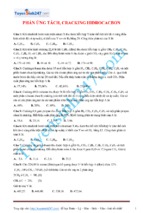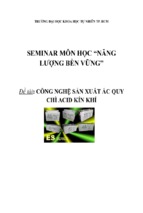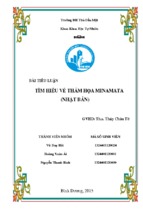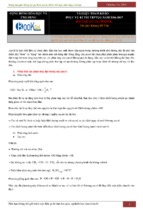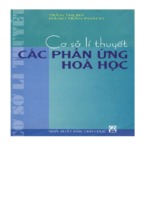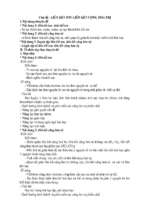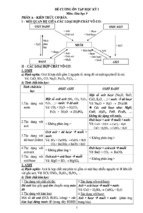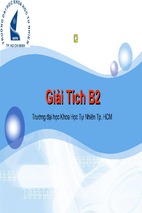Coulson and Richardson’s
CHEMICAL ENGINEERING
VOLUME 2
FIFTH EDITION
Particle Technology and
Separation Processes
Related Butterworth-Heinemann Titles in the Chemical Engineering Series by
J. M. COULSON & J. F. RICHARDSON
Chemical Engineering, Volume 1, Sixth edition
Fluid Flow, Heat Transfer and Mass Transfer
(with J. R. Backhurst and J. H. Harker)
Chemical Engineering, Volume 3, Third edition
Chemical and Biochemical Reaction Engineering, and Control
(edited by J. F. Richardson and D. G. Peacock)
Chemical Engineering, Volume 6, Third edition
Chemical Engineering Design
(R. K. Sinnott)
Chemical Engineering, Solutions to Problems in Volume 1
(J. R. Backhurst, J. H. Harker and J. F. Richardson)
Chemical Engineering, Solutions to Problems in Volume 2
(J. R. Backhurst, J. H. Harker and J. F. Richardson)
Coulson and Richardson’s
CHEMICAL ENGINEERING
VOLUME 2
FIFTH EDITION
Particle Technology and
Separation Processes
J. F. RICHARDSON
University of Wales Swansea
and
J. H. HARKER
University of Newcastle upon Tyne
with
J. R. BACKHURST
University of Newcastle upon Tyne
OXFORD AMSTERDAM BOSTON LONDON NEW YORK PARIS
SAN DIEGO SAN FRANCISCO SINGAPORE SYDNEY TOKYO
Butterworth-Heinemann
An imprint of Elsevier Science
Linacre House, Jordan Hill, Oxford OX2 8DP
225 Wildwood Avenue, Woburn, MA 01801-2041
First published 1955
Reprinted (with revisions) 1956, 1959, 1960
Reprinted 1962
Second edition 1968
Reprinted 1976
Third edition (SI units) 1978
Reprinted (with revisions) 1980, 1983, 1985, 1987, 1989
Fourth edition 1991
Reprinted (with revisions) 1993, 1996, 1997, 1998, 1999, 2001
Fifth edition 2002
Copyright 1991, 2002, J. F. Richardson and J. H. Harker. All rights reserved
The right of J. F. Richardson and J. H. Harker to be identified as the authors of this work has been asserted in
accordance with the Copyright, Designs and Patents Act 1988
All rights reserved. No part of this publication may be reproduced in
any material form (including photocopying or storing in any medium by
electronic means and whether or not transiently or incidentally to some
other use of this publication) without the written permission of the
copyright holder except in accordance with the provisions of the Copyright,
Designs and Patents Act 1988 or under the terms of a licence issued by the
Copyright Licensing Agency Ltd, 90 Tottenham Court Road, London,
England W1P 0LP. Applications for the copyright holder’s written
permission to reproduce any part of this publication should be addressed
to the publishers
British Library Cataloguing in Publication Data
A catalogue record for this book is available from the British Library
Library of Congress Cataloguing in Publication Data
A catalogue record for this book is available from the Library of Congress
ISBN 0 7506 4445 1
Typeset by Laserwords Private Limited, Chennai, India
Printed and bounded in Great Britain by the Bath Press, Bath
Preface to the Fifth Edition .......................................
xvii
Preface to the Fourth Edition ....................................
xix
Preface to the 1983 Reprint of the Third Edition .....
xxi
Preface to Third Edition .............................................
xxiii
Preface to Second Edition .........................................
xxv
Preface to First Edition ..............................................
xxvii
Acknowledgements ...................................................
xxix
INTRODUCTION ..........................................................
xxxi
1 Particulate Solids ....................................................
1
1.1. INTRODUCTION .....................................................
1
1.2. PARTICLE CHARACTERISATION .........................
2
1.3. PARTICULATE SOLIDS IN BULK ..........................
22
1.4. BLENDING OF SOLID PARTICLES .......................
30
1.5. CLASSIFICATION OF SOLID PARTICLES ............
37
1.6. SEPARATION OF SUSPENDED SOLID
PARTICLES FROM FLUIDS ..........................................
67
1.7. FURTHER READING ..............................................
91
1.8. REFERENCES ........................................................
92
1.9. NOMENCLATURE ..................................................
93
2 Particle Size Reduction and Enlargement ............
95
2.1. INTRODUCTION .....................................................
95
2.2. SIZE REDUCTION OF SOLIDS ..............................
95
2.3. TYPES OF CRUSHING EQUIPMENT ....................
106
2.4. SIZE ENLARGEMENT OF PARTICLES .................
137
2.5. FURTHER READING ..............................................
143
2.6. REFERENCES ........................................................
143
2.7. NOMENCLATURE ..................................................
144
3 Motion of Particles in a Fluid .................................
146
3.1. INTRODUCTION .....................................................
146
3.2. FLOW PAST A CYLINDER AND A SPHERE .........
146
3.3. THE DRAG FORCE ON A SPHERICAL
PARTICLE ......................................................................
149
3.4. NON-SPHERICAL PARTICLES ..............................
164
3.5. MOTION OF BUBBLES AND DROPS ....................
168
3.6. DRAG FORCES AND SETTLING VELOCITIES
FOR PARTICLES IN NON- NEWTONIAN FLUIDS .......
169
3.7. ACCELERATING MOTION OF A PARTICLE IN
THE GRAVITATIONAL FIELD .......................................
173
3.8. MOTION OF PARTICLES IN A CENTRIFUGAL
FIELD .............................................................................
185
3.9. FURTHER READING ..............................................
187
3.10. REFERENCES ......................................................
188
3.11. NOMENCLATURE ................................................
189
4 Flow of Fluids through Granular Beds and
Packed Columns ........................................................
191
4.1. INTRODUCTION .....................................................
191
4.2. FLOW OF A SINGLE FLUID THROUGH A
GRANULAR BED ...........................................................
191
4.3. DISPERSION ..........................................................
205
4.4. HEAT TRANSFER IN PACKED BEDS ...................
211
4.5. PACKED COLUMNS ..............................................
212
4.6. FURTHER READING ..............................................
232
4.7. REFERENCES ........................................................
232
4.8. NOMENCLATURE ..................................................
234
5 Sedimentation .........................................................
237
5.1. INTRODUCTION .....................................................
237
5.2. SEDIMENTATION OF FINE PARTICLES ..............
237
5.3. SEDIMENTATION OF COARSE PARTICLES .......
267
5.4. FURTHER READING ..............................................
286
5.5. REFERENCES ........................................................
286
5.6. NOMENCLATURE ..................................................
288
6 Fluidisation ..............................................................
291
6.1. CHARACTERISTICS OF FLUIDISED
SYSTEMS ......................................................................
291
6.2. LIQUID-SOLIDS SYSTEMS ....................................
302
6.3. GAS-SOLIDS SYSTEMS ........................................
315
6.4. GAS-LIQUID SOLIDS FLUIDISED BEDS ...............
333
6.5. HEAT TRANSFER TO A BOUNDARY
SURFACE ......................................................................
334
6.6. MASS AND HEAT TRANSFER BETWEEN
FLUID AND PARTICLES ...............................................
343
6.7. SUMMARY OF THE PROPERTIES OF
FLUIDISED BEDS ..........................................................
357
6.8. APPLICATIONS OF THE FLUIDISED SOLIDS
TECHNIQUE ..................................................................
358
6.9. FURTHER READING ..............................................
364
6.10. REFERENCES ......................................................
364
6.11. NOMENCLATURE ................................................
369
7 Liquid Filtration .......................................................
372
7.1. INTRODUCTION .....................................................
372
7.2. FILTRATION THEORY ...........................................
374
7.3. FILTRATION PRACTICE ........................................
382
7.4. FILTRATION EQUIPMENT .....................................
387
7.5. FURTHER READING ..............................................
434
7.6. REFERENCES ........................................................
435
7.7. NOMENCLATURE ..................................................
435
8 Membrane Separation Processes ..........................
437
8.1. INTRODUCTION .....................................................
437
8.2. CLASSIFICATION OF MEMBRANE
PROCESSES .................................................................
437
8.3. THE NATURE OF SYNTHETIC MEMBRANES ......
438
8.4. GENERAL MEMBRANE EQUATION .....................
442
8.5. CROSS-FLOW MICROFILTRATION ......................
442
8.6. ULTRAFILTRATION ...............................................
446
8.7. REVERSE OSMOSIS .............................................
452
8.8. MEMBRANE MODULES AND PLANT
CONFIGURATION .........................................................
455
8.9. MEMBRANE FOULING ..........................................
464
8.10. ELECTRODIALYSIS .............................................
465
8.11. REVERSE OSMOSIS WATER TREATMENT
PLANT ............................................................................
467
8.12. PERVAPORATION ...............................................
469
8.13. LIQUID MEMBRANES ..........................................
471
8.14. GAS SEPARATIONS ............................................
472
8.15. FURTHER READING ............................................
472
8.16. REFERENCES ......................................................
473
8.17. NOMENCLATURE ................................................
474
9 Centrifugal Separations ..........................................
475
9.1. INTRODUCTION .....................................................
475
9.2. SHAPE OF THE FREE SURFACE OF THE
LIQUID ...........................................................................
476
9.3. CENTRIFUGAL PRESSURE ..................................
477
9.4. SEPARATION OF IMMISCIBLE LIQUIDS OF
DIFFERENT DENSITIES ...............................................
478
9.5. SEDIMENTATION IN A CENTRIFUGAL FIELD .....
480
9.6. FILTRATION IN A CENTRIFUGE ...........................
485
9.7. MECHANICAL DESIGN ..........................................
489
9.8. CENTRIFUGAL EQUIPMENT ................................
489
9.9. FURTHER READING ..............................................
500
9.10. REFERENCES ......................................................
500
9.11. NOMENCLATURE ................................................
501
10 Leaching ................................................................
502
10.1. INTRODUCTION ...................................................
502
10.2. MASS TRANSFER IN LEACHING
OPERATIONS ................................................................
503
10.3. EQUIPMENT FOR LEACHING .............................
506
10.4. COUNTERCURRENT WASHING OF SOLIDS ....
515
10.5. CALCULATION OF THE NUMBER OF
STAGES .........................................................................
519
10.6. NUMBER OF STAGES FOR
COUNTERCURRENT WASHING BY GRAPHICAL
METHODS .....................................................................
526
10.7. FURTHER READING ............................................
540
10.8. REFERENCES ......................................................
540
10.9. NOMENCLATURE ................................................
540
11 Distillation ..............................................................
542
11.1. INTRODUCTION ...................................................
542
11.2. VAPOUR LIQUID EQUILIBRIUM .........................
542
11.3. METHODS OF DISTILLATION TWO
COMPONENT MIXTURES ............................................
555
11.4. THE FRACTIONATING COLUMN ........................
559
11.5. CONDITIONS FOR VARYING OVERFLOW IN
NON-IDEAL BINARY SYSTEMS ...................................
581
11.6. BATCH DISTILLATION .........................................
592
11.7. MULTICOMPONENT MIXTURES ........................
599
11.8. AZEOTROPIC AND EXTRACTIVE
DISTILLATION ...............................................................
616
11.9. STEAM DISTILLATION .........................................
621
11.10. PLATE COLUMNS ..............................................
625
11.11. PACKED COLUMNS FOR DISTILLATION .........
638
11.12. FURTHER READING ..........................................
649
11.13. REFERENCES ....................................................
649
11.14. NOMENCLATURE ..............................................
652
12 Absorption of Gases .............................................
656
12.1. INTRODUCTION ...................................................
656
12.2. CONDITIONS OF EQUILIBRIUM BETWEEN
LIQUID AND GAS ..........................................................
657
12.3. THE MECHANISM OF ABSORPTION .................
658
12.4. DETERMINATION OF TRANSFER
COEFFICIENTS .............................................................
666
12.5. ABSORPTION ASSOCIATED WITH
CHEMICAL REACTION .................................................
675
12.6. ABSORPTION ACCOMPANIED BY THE
LIBERATION OF HEAT .................................................
681
12.7. PACKED TOWERS FOR GAS ABSORPTION .....
682
12.8. PLATE TOWERS FOR GAS ABSORPTION ........
702
12.9. OTHER EQUIPMENT FOR GAS
ABSORPTION ................................................................
709
12.10. FURTHER READING ..........................................
714
12.11. REFERENCES ....................................................
715
12.12. NOMENCLATURE ..............................................
717
13 Liquid Liquid Extraction ......................................
721
13.1. INTRODUCTION ...................................................
721
13.2. EXTRACTION PROCESSES ................................
722
13.3. EQUILIBRIUM DATA ............................................
725
13.4. CALCULATION OF THE NUMBER OF
THEORETICAL STAGES ..............................................
728
13.5. CLASSIFICATION OF EXTRACTION
EQUIPMENT ..................................................................
742
13.6. STAGE-WISE EQUIPMENT FOR
EXTRACTION ................................................................
744
13.7. DIFFERENTIAL CONTACT EQUIPMENT FOR
EXTRACTION ................................................................
750
13.8. USE OF SPECIALISED FLUIDS ..........................
763
13.9. FURTHER READING ............................................
766
13.10. REFERENCES ....................................................
767
13.11. NOMENCLATURE ..............................................
769
14 Evaporation ...........................................................
771
14.1. INTRODUCTION ...................................................
771
14.2. HEAT TRANSFER IN EVAPORATORS ...............
771
14.3. SINGLE-EFFECT EVAPORATORS .....................
778
14.4. MULTIPLE-EFFECT EVAPORATORS .................
780
14.5. IMPROVED EFFICIENCY IN EVAPORATION .....
791
14.6. EVAPORATOR OPERATION ...............................
802
14.7. EQUIPMENT FOR EVAPORATION .....................
805
14.8. FURTHER READING ............................................
823
14.9. REFERENCES ......................................................
823
14.10. NOMENCLATURE ..............................................
825
15 Crystallisation .......................................................
827
15.1. INTRODUCTION ...................................................
827
15.2. CRYSTALLISATION FUNDAMENTALS ...............
828
15.3. CRYSTALLISATION FROM SOLUTIONS ............
853
15.4. CRYSTALLISATION FROM MELTS .....................
868
15.5. CRYSTALLISATION FROM VAPOURS ...............
875
15.6. FRACTIONAL CRYSTALLISATION .....................
885
15.7. FREEZE CRYSTALLISATION ..............................
888
15.8. HIGH PRESSURE CRYSTALLISATION ..............
890
15.9. FURTHER READING ............................................
893
15.10. REFERENCES ....................................................
894
15.11. NOMENCLATURE ..............................................
897
16 Drying .....................................................................
901
16.1. INTRODUCTION ...................................................
901
16.2. GENERAL PRINCIPLES .......................................
901
16.3. RATE OF DRYING ................................................
904
16.4. THE MECHANISM OF MOISTURE
MOVEMENT DURING DRYING ....................................
912
16.5. DRYING EQUIPMENT ..........................................
918
16.6. SPECIALISED DRYING METHODS .....................
957
16.7. THE DRYING OF GASES .....................................
963
16.8. FURTHER READING ............................................
964
16.9. REFERENCES ......................................................
965
16.10. NOMENCLATURE ..............................................
967
17 Adsorption .............................................................
970
17.1. INTRODUCTION ...................................................
970
17.2. THE NATURE OF ADSORBENTS .......................
974
17.3. ADSORPTION EQUILIBRIA .................................
979
17.4. MULTICOMPONENT ADSORPTION ...................
993
17.5. ADSORPTION FROM LIQUIDS ...........................
994
17.6. STRUCTURE OF ADSORBENTS ........................
994
17.7. KINETIC EFFECTS ...............................................
1002
17.8. ADSORPTION EQUIPMENT ................................
1008
17.9. REGENERATION OF SPENT ADSORBENT .......
1026
17.10. FURTHER READING ..........................................
1047
17.11. REFERENCES ....................................................
1047
17.12. NOMENCLATURE ..............................................
1049
18 Ion Exchange .........................................................
1053
18.1. INTRODUCTION ...................................................
1053
18.2. ION EXCHANGE RESINS ....................................
1054
18.3. RESIN CAPACITY ................................................
1054
18.4. EQUILIBRIUM .......................................................
1056
18.5. EXCHANGE KINETICS ........................................
1060
18.6. ION EXCHANGE EQUIPMENT ............................
1066
18.7. FURTHER READING ............................................
1073
18.8. REFERENCES ......................................................
1073
18.9. NOMENCLATURE ................................................
1074
19 Chromatographic Separations .............................
1076
19.1. INTRODUCTION ...................................................
1076
19.2. ELUTION CHROMATOGRAPHY .........................
1077
19.3. BAND BROADENING AND SEPARATION
EFFICIENCY ..................................................................
1080
19.4. TYPES OF CHROMATOGRAPHY .......................
1083
19.5. LARGE SCALE ELUTION (CYCLIC BATCH)
CHROMATOGRAPHY ...................................................
1088
19.6. SELECTIVE ADSORPTION OF PROTEINS ........
1093
19.7. SIMULATED COUNTERCURRENT
TECHNIQUES ................................................................
1096
19.8. COMBINED REACTION AND SEPARATION ......
1098
19.9. COMPARISON WITH OTHER SEPARATION
METHODS .....................................................................
1099
19.10. FURTHER READING ..........................................
1100
19.11. REFERENCES ....................................................
1100
19.12. NOMENCLATURE ..............................................
1103
20 Product Design and Process Intensification ......
1104
20.1. PRODUCT DESIGN ..............................................
1104
20.2. PROCESS INTENSIFICATION .............................
1110
20.3. FURTHER READING ............................................
1134
20.4. REFERENCES ......................................................
1134
Appendix .....................................................................
1137
A1. STEAM TABLES ......................................................
1138
A2. CONVERSION FACTORS FOR SOME
COMMON SI UNITS ......................................................
1147
Problems .....................................................................
1149
Preface to the Fifth Edition
It is now 47 years since Volume 2 was first published in 1955, and during the intervening time the profession of chemical engineering has grown to maturity in the UK, and
worldwide; the Institution of Chemical Engineers, for instance, has moved on from its 33rd
to its 80th year of existence. No longer are the heavy chemical and petroleum-based industries the main fields of industrial applications of the discipline, but chemical engineering
has now penetrated into areas, such as pharmaceuticals, health care, foodstuffs, and
biotechnology, where the general level of sophistication of the products is much greater,
and the scale of production often much smaller, though the unit value of the products is
generally much higher. This change has led to a move away from large-scale continuous
plants to smaller-scale batch processing, often in multipurpose plants. Furthermore, there
is an increased emphasis on product purity, and the need for more refined separation
technology, especially in the pharmaceutical industry where it is often necessary to carry
out the difficult separation of stereo-isomers, one of which may have the desired therapeutic properties while the other is extremely malignant. Many of these large molecules
are fragile and are liable to be broken down by the harsh solvents commonly used in
the manufacture of bulk chemicals. The general principles involved in processing these
more specialised materials are essentially the same as in bulk chemical manufacture, but
special care must often be taken to ensure that processing conditions are mild.
One big change over the years in the chemical and processing industries is the emphasis
on designing products with properties that are specified, often in precise detail, by the
customer. Chemical composition is often of relatively little importance provided that the
product has the desired attributes. Hence product design, a multidisciplinary activity, has
become a necessary precursor to process design.
Although undergraduate courses now generally take into account these new requirements, the basic principles of chemical engineering remain largely unchanged and this
is particularly the case with the two main topics of Volume 2, Particle Mechanics and
Separation Processes. In preparing this new edition, the authors have faced a typical
engineering situation where a compromise has to be reached on size. The knowledgebase has increased to such an extent that many of the individual chapters appear to merit
expansion into separate books. At the same time, as far as students and those from other
disciplines are concerned, there is still a need for a an integrated concise treatment in
which there is a consistency of approach across the board and, most importantly, a degree
of uniformity in the use of symbols. It has to be remembered that the learning capacity
of students is certainly no greater than it was in the past, and a book of manageable
proportions is still needed.
The advice that academic staffs worldwide have given in relation to revising the book
has been that the layout should be retained substantially unchanged — better the devil
we know, with all his faults! With this in mind the basic structure has been maintained.
However, the old Chapter 8 on Gas Cleaning, which probably did not merit a chapter
xvii
xviii
PREFACE TO THE FIFTH EDITION
on its own, has been incorporated into Chapter 1, where it sits comfortably beside other
topics involving the separation of solid particles from fluids. This has left Chapter 8 free
to accommodate Membrane Separations (formerly Chapter 20) which then follows on
logically from Filtration in Chapter 7. The new Chapter 20 then provides an opportunity
to look to the future, and to introduce the topics of Product Design and the Use of
Intensified Fields (particularly centrifugal in place of gravitational) and miniaturisation,
with all the advantages of reduced hold-up, leading to a reduction in the amount of
out-of-specification material produced during the changeover between products in the
case multipurpose plants, and in improved safety where the materials have potentially
hazardous properties.
Other significant changes are the replacement of the existing chapter on Crystallisation
by an entirely new chapter written with expert guidance from Professor J. W. Mullin, the
author of the standard textbook on that topic. The other chapters have all been updated and
additional Examples and Solutions incorporated in the text. Several additional Problems
have been added at the end, and solutions are available in the Solutions Manual, and now
on the Butterworth-Heinemann website.
We are, as usual, indebted to both reviewers and readers for their suggestions and for
pointing out errors in earlier editions. These have all been taken into account. Please keep
it up in future! We aim to be error-free but are not always as successful as we would like
to be! Unfortunately, the new edition is somewhat longer than the previous one, almost
inevitably so with the great expansion in the amount of information available. Whenever
in the past we have cut out material which we have regarded as being out-of-date, there is
inevitably somebody who writes to say that he now has to keep both the old and the new
editions because he finds that something which he had always found particularly useful
in the past no longer appears in the revised edition. It seems that you cannot win, but we
keep trying!
J. F. RICHARDSON
J. H. HARKER
Preface to the Fourth Edition
Details of the current restructuring of this Chemical Engineering Series, coinciding with
the publication of the Fourth Edition of Volumes 1 and 2 and to be followed by new
editions of the other volumes, have been set out in the Preface to the Fourth Edition of
Volume 1. The revision involves the inclusion in Volume 1 of material on non-Newtonian
flow (previously in Volume 3) and the transference from Volume 2 to Volume 1 of
Pneumatic and Hydraulic Conveying and Liquid Mixing. In addition, Volume 6, written by
Mr. R. K. Sinnott, which first appeared in 1983, nearly thirty years after the first volumes,
acquires some of the design-orientated material from Volume 2, particularly that related
to the hydraulics of packed and plate columns.
The new sub-title of Volume 2, Particle Technology and Separation Processes, reflects
both the emphasis of the new edition and the current importance of these two topics
in Chemical Engineering. Particle Technology covers the basic properties of systems of
particles and their preparation by comminution (Chapters 1 and 2). Subsequent chapters
deal with the interaction between fluids and particles, under conditions ranging from those
applicable to single isolated particles, to systems of particles freely suspended in fluids,
as in sedimentation and fluidisation; and to packed beds and columns where particles
are held in a fixed configuration relative to one another. The behaviour of particles in
both gravitational and centrifugal fields is also covered. It will be noted that Centrifugal
Separations are now brought together again in a single chapter, as in the original scheme
of the first two editions, because the dispersal of the material between other chapters in
the Third Edition was considered to be not entirely satisfactory.
Fluid–solids Separation Processes are discussed in the earlier chapters under the
headings of Sedimentation, Filtration, Gas Cleaning and Centrifugal Separations. The
remaining separations involve applications of mass-transfer processes, in the presence
of solid particles in Leaching (solid–liquid extraction), Drying and Crystallisation. In
Distillation, Gas Absorption and Liquid–Liquid Extraction, interactions occur between
two fluid streams with mass transfer taking place across a phase boundary. Usually these
operations are carried out as continuous countercurrent flow processes, either stagewise (as
in a plate-column) or with differential contacting (as in a packed-column). There is a case
therefore for a generalised treatment of countercurrent contacting processes with each
of the individual operations, such as Distillation, treated as particular cases. Although
this approach has considerable merit, both conceptually and in terms of economy of
space, it has not been adopted here, because the authors’ experience of teaching suggests
that the student more readily grasps the principles involved, by considering each topic
in turn, provided of course that the teacher makes a serious attempt to emphasise the
common features.
The new edition concludes with four chapters which are newcomers to Volume 2, each
written by a specialist author from the Chemical Engineering Department at Swansea —
xix
xx
PREFACE TO THE FOURTH EDITION
Adsorption and Ion Exchange (Chapters 17 and 18)
(topics previously covered in Volume 3)
by J. H. Bowen
Chromatographic Separations (Chapter 19)
by J. R. Conder
and
Membrane Separations (Chapter 20)
by W. R. Bowen.
These techniques are of particular interest in that they provide a means of separating
molecular species which are difficult to separate by other techniques and which may be
present in very low concentrations. Such species include large molecules, sub-micrometre
size particles, stereo-isomers and the products from bioreactors (Volume 3). The separations can be highly specific and may depend on molecular size and shape, and the
configuration of the constituent chemical groups of the molecules.
Again I would express our deep sense of loss on the death of our colleague, Professor
John Coulson, in January 1990. His two former colleagues at Newcastle, Dr. John Backhurst and the Reverend Dr. John Harker, have played a substantial part in the preparation
of this new edition both by updating the sections originally attributable to him, and by
obtaining new illustrations and descriptions of industrial equipment.
Finally, may I again thank our readers who, in the past, have made such helpful suggestions and have drawn to our attention errors, many of which would never have been spotted
by the authors. Would they please continue their good work!
Swansea
July 1990
J. F. RICHARDSON
Note to Fourth Edition — Revised Impression 1993
In this reprint corrections and minor revisions have been incorporated. The principal
changes are as follows:
(1) Addition of an account of the construction and operation of the Szego Grinding
Mill (Chapter 2).
(2) Inclusion of the Yoshioka method for the design of thickeners (Chapter 5).
(3) Incorporation of Geldart’s classification of powders in relation to fluidisation characteristics (Chapter 6).
(4) The substitution of a more logical approach to filtration of slurries yielding
compressible cakes and redefinition of the specific resistance (Chapter 7).
(5) Revision of the nomenclature for the underflow streams of washing thickeners to
bring it into line with that used for other stagewise processes, including distillation
and absorption (Chapter 10).
(6) A small addition to the selection of dryers and the inclusion of Examples
(Chapter 16).
JFR
Preface to the 1983 Reprint of the
Third Edition
In this volume, there is an account of the basic theory underlying the various Unit Operations, and typical items of equipment are described. The equipment items are the essential
components of a complete chemical plant, and the way in which such a plant is designed
is the subject of Volume 6 of the series which has just appeared. The new volume includes
material on flowsheeting, heat and material balances, piping, mechanical construction and
costing. It completes the Series and forms an introduction to the very broad subject of
Chemical Engineering Design.
xxi
Preface to Third Edition
In producing a third edition, we have taken the opportunity, not only of updating the
material but also of expressing the values of all the physical properties and characteristics
of the systems in the SI System of units, as has already been done in Volumes 1 and 3. The
SI system, which is described in detail in Volume 1, is widely adopted in Europe and is
now gaining support elsewhere in the world. However, because some readers will still be
more familiar with the British system, based on the foot, pound and second, the old units
have been retained as alternatives wherever this can be done without causing confusion.
The material has, to some extent, been re-arranged and the first chapter now relates
to the characteristics of particles and their behaviour in bulk, the blending of solids,
and classification according to size or composition of material. The following chapters
describe the behaviour of particles moving in a fluid and the effects of both gravitational
and centrifugal forces and of the interactions between neighbouring particles. The old
chapter on centrifuges has now been eliminated and the material dispersed into the appropriate parts of other chapters. Important applications which are considered include flow in
granular beds and packed columns, fluidisation, transport of suspended particles, filtration
and gas cleaning. An example of the updating which has been carried out is the addition of
a short section on fluidised bed combustion, potentially the most important commercial
application of the technique of fluidisation. In addition, we have included an entirely
new section on flocculation, which has been prepared for us by Dr. D. J. A. Williams of
University College, Swansea, to whom we are much indebted.
Mass transfer operations play a dominant role in chemical processing and this is
reflected in the continued attention given to the operations of solid–liquid extraction,
distillation, gas absorption and liquid–liquid extraction. The last of these subjects, together
with material on liquid–liquid mixing, is now dealt within a single chapter on liquid–liquid
systems, the remainder of the material which appeared in the former chapter on mixing
having been included earlier under the heading of solids blending. The volume concludes
with chapters on evaporation, crystallisation and drying.
Volumes 1, 2 and 3 form an integrated series with the fundamentals of fluid flow,
heat transfer and mass transfer in the first volume, the physical operations of chemical
engineering in this, the second volume, and in the third volume, the basis of chemical
and biochemical reactor design, some of the physical operations which are now gaining
in importance and the underlying theory of both process control and computation. The
solutions to the problems listed in Volumes 1 and 2 are now available as Volumes 4 and
5 respectively. Furthermore, an additional volume in the series is in course of preparation
and will provide an introduction to chemical engineering design and indicate how the
principles enunciated in the earlier volumes can be translated into chemical plant.
We welcome the collaboration of J. R. Backhurst and J. H. Harker as co-authors in the
preparation of this edition, following their assistance in the editing of the latest edition
of Volume 1 and their authorship of Volumes 4 and 5. We also look forward to the
appearance of R. K. Sinnott’s volume on chemical engineering design.
xxiii
- Xem thêm -

